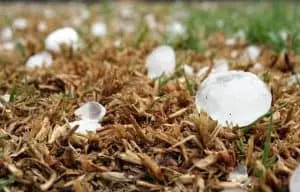 At Elite Roofing, we often hear from concerned homeowners during the spring/summer Colorado storm season. From strong wind gusts to hail damage prevalent on the Front Range, these storms often leave plenty of property damage in their wake. If you suspect that you’ve sustained hail damage, we encourage you to take note of today’s post.
At Elite Roofing, we often hear from concerned homeowners during the spring/summer Colorado storm season. From strong wind gusts to hail damage prevalent on the Front Range, these storms often leave plenty of property damage in their wake. If you suspect that you’ve sustained hail damage, we encourage you to take note of today’s post.
Depending on the type and intensity of a hail storm, the aftermath can be extremely varied. Like any property damage, you have a limited amount of time to make an insurance claim after hail damage has occurred. This is why it’s important to familiarize yourself with the signs and varying degrees of hail damage.
Sign of Denver Hail Damage
As leading Denver roofers, one of the most important pieces of advice we give homeowners is to avoid climbing or walking on a roof. Not only do you run the risk of a dangerous fall, damage or deteriorating roofs may not be able to support your weight. Leave the roofing inspection to the experts. Do-it-yourselfers fear not, there are several signs you can check for from a safe vantage point. If you suspect you have notable Denver hail damage, we encourage you to check for the following from ground level:
- Window damage
- Gutter and downspout damage
- Siding damage
- Deck damage
- Fence damage
What is Hail?
Before we get into the different types of hail, let’s first establish what we mean when we say hail. Hail is a type of precipitation that forms during thunderstorms when updrafts push raindrops higher into the atmosphere into freezing temperatures. The raindrops then freeze forming small balls of ice. For frozen precipitation to be categorized as hail, it has to have a diameter greater than 5mm. To the untrained eye, hail is hail. However, the size, color and clarity of hail is actually indicative of just how destructive is can be.
Clear Hail
Believe it or not, the clarity of hail is a big indicator of potential damage. Next time you’re hit with hail, make note of the color. If it’s clear, it’s essentially solid ice which poses a much bigger threat than cloudy pieces of hail. The density of a clear piece of hail can pack a big punch.
Cloudy Hail
Cloudy or white hail is full of air molecules and is therefore less dense. These pieces of hail break easily and cause much less damage upon impact.
Size Matters
Aside from color, it’s also important to also consider the size of the hail you received. If the hail was pea-size you can rest assured that your property is safe, regardless of the level of clarity. However, a marble-size piece of clear hail can actually pose a bigger threat than a golf ball size piece of cloudy hail.
As you assess damage after a hail storm, be sure and take note of the color and size of the hail.
Reporting Denver Hail Damage
If you suspect that recent hail activity has damaged your property, it’s important to talk to a roofing professional before contacting your insurance provider. An experience professional can help you determine if your damage is extensive enough to warrant a claim. At Elite Roofing we’re proud to offer free, no-obligation roof inspections. Together we can help you determine your best course of action. Let’s get started today!







